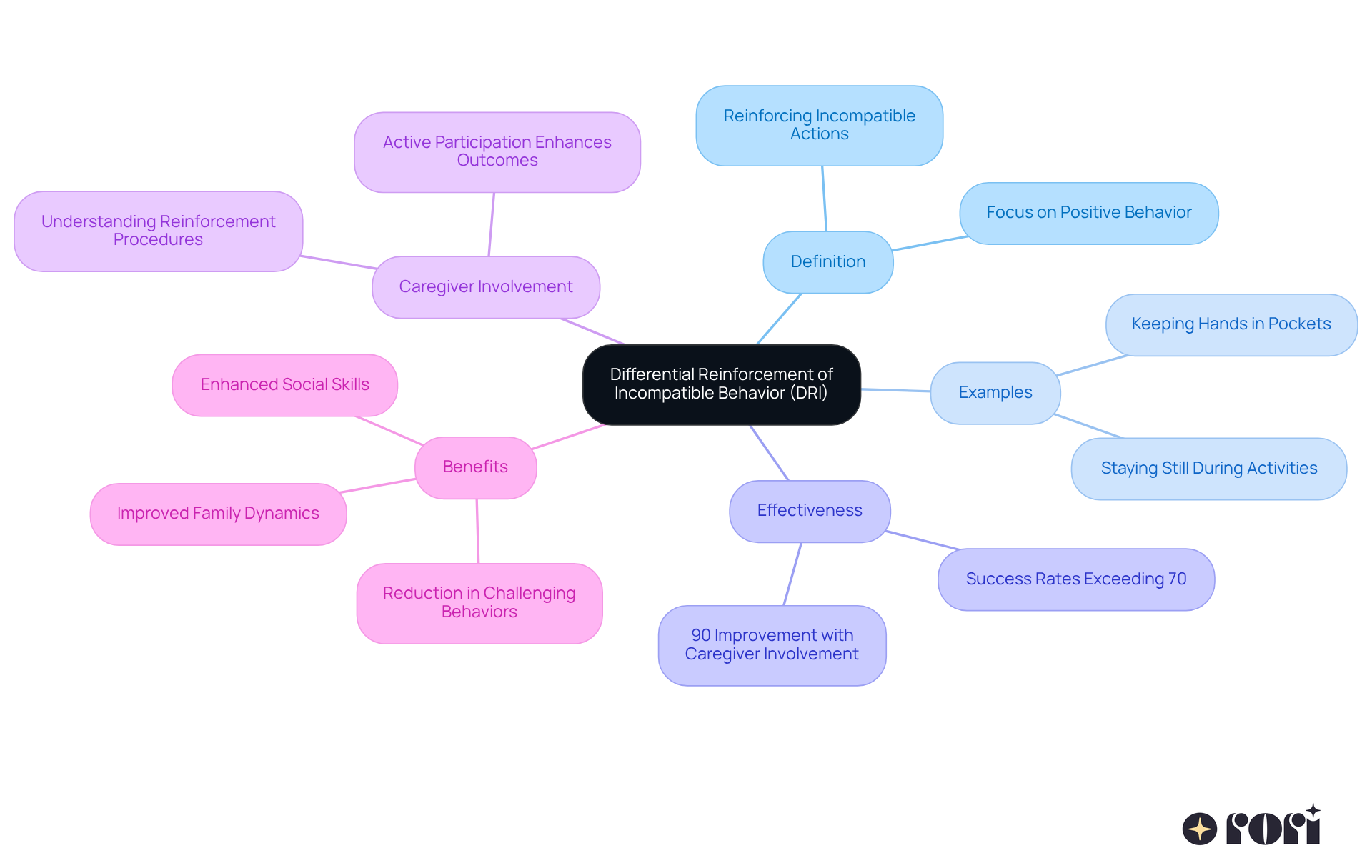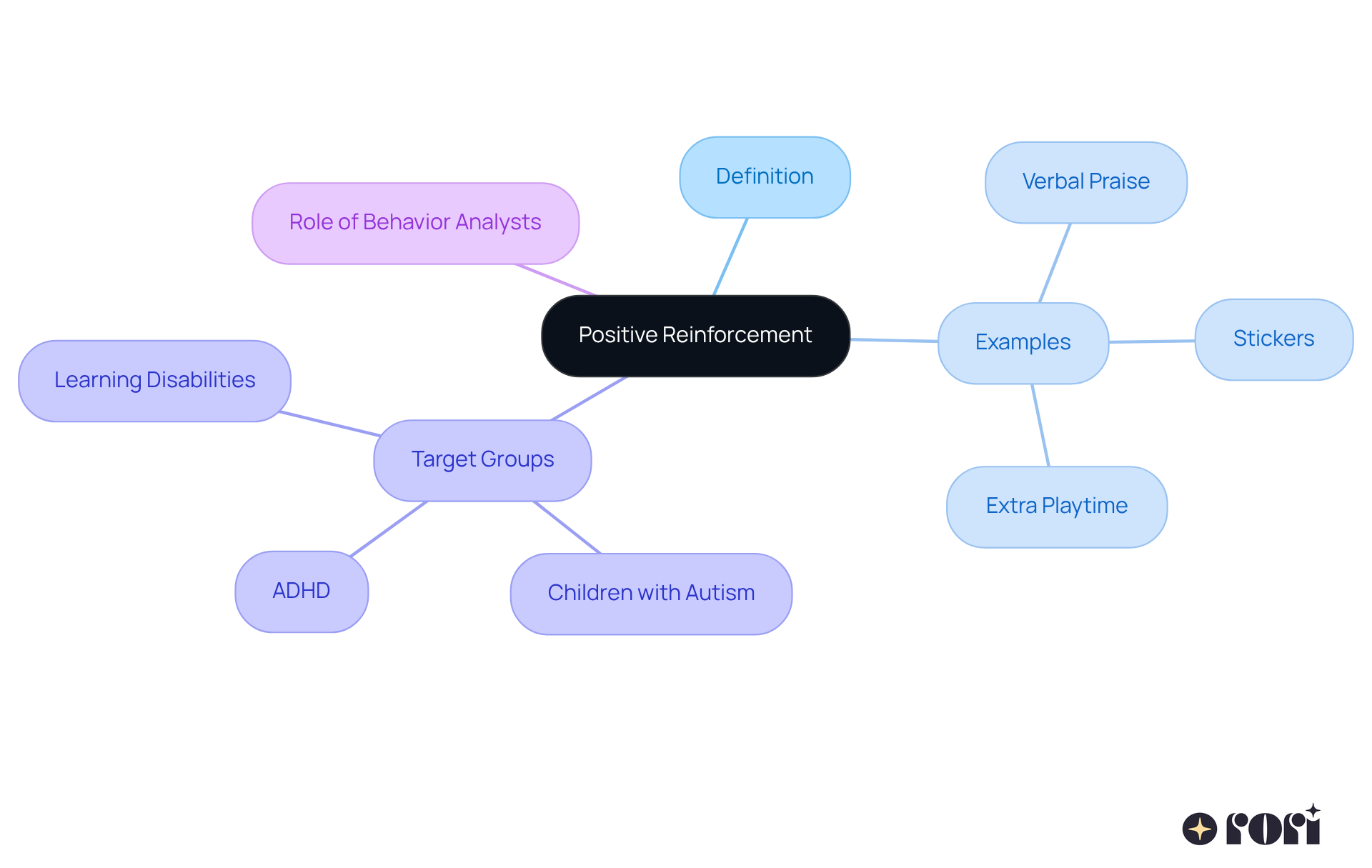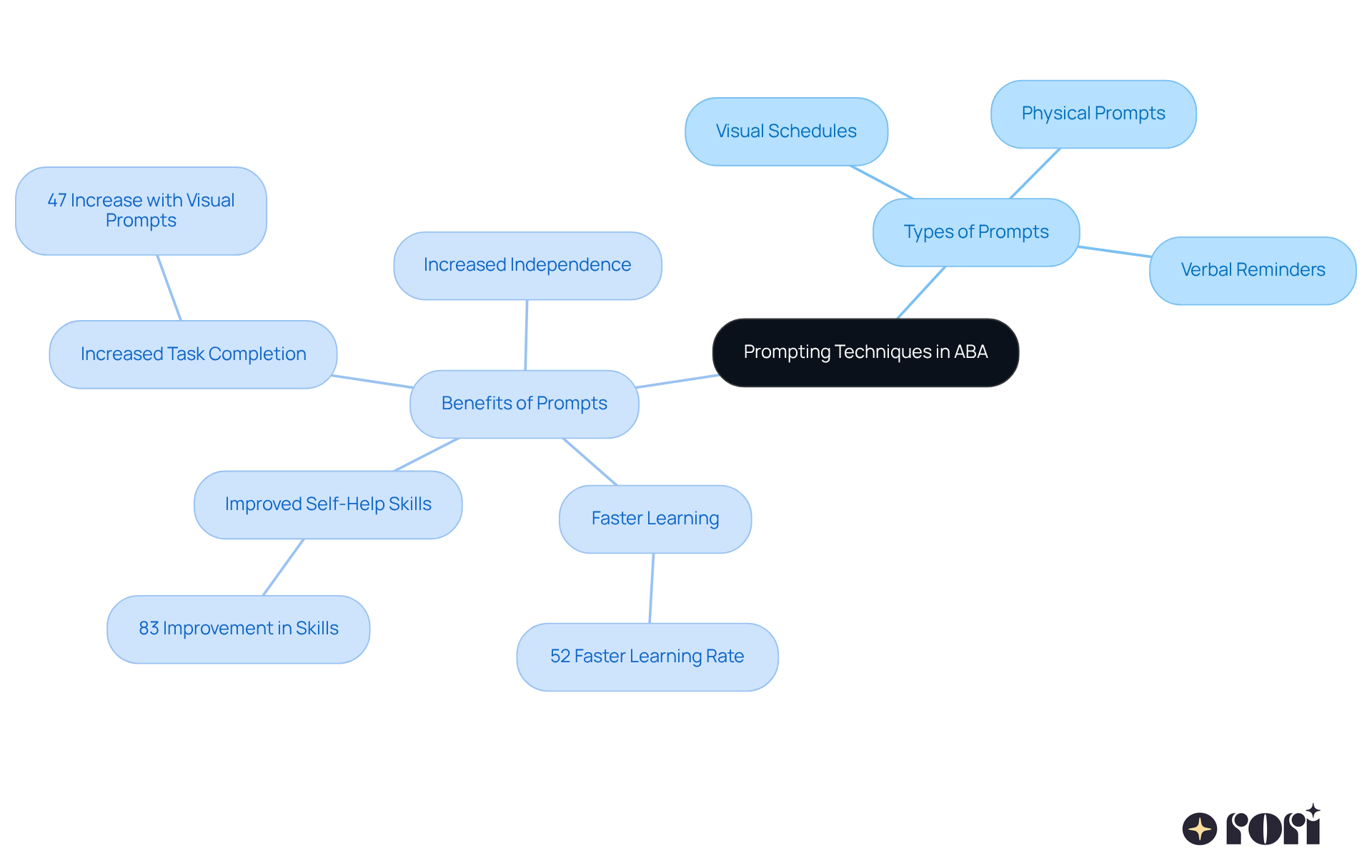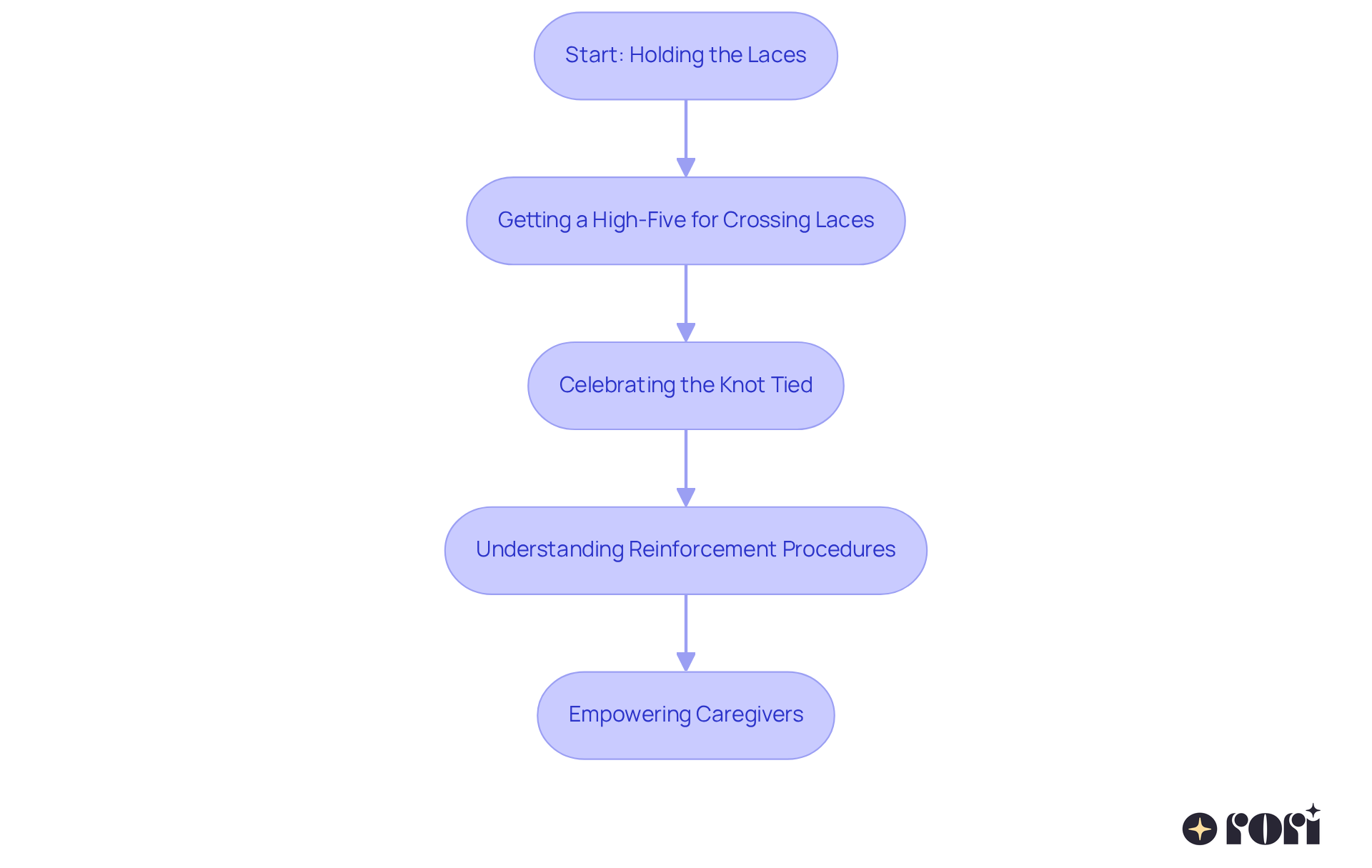This article dives into some essential reinforcement procedures in Applied Behavior Analysis (ABA) that you, as a parent, can easily implement to support your child's behavioral development. 🌟 It’s all about personalized strategies! Think of techniques like:
These are key to fostering effective behavior change and enhancing your child's learning experiences right at home.
Now, let’s face it—parenting can be a challenge, especially when it comes to understanding how to guide our little ones. But don’t worry! By using these strategies, you can create a nurturing environment that encourages growth and learning. Imagine celebrating those small victories together as your child learns and develops new skills!
As you explore these techniques, remember that you’re not alone. Many parents share similar experiences, and it’s perfectly okay to seek help or resources. Let’s explore this together! By embracing these methods, you’re taking a wonderful step toward supporting your child’s journey. We’re here to help you every step of the way!
Navigating the world of Applied Behavior Analysis (ABA) can feel overwhelming for parents, right? Understanding the intricacies of behavior modification is no small feat! But here’s the good news: when personalized reinforcement strategies are applied effectively at home, the potential for positive change is huge.
In this article, we’ll explore ten essential reinforcement strategies that can help you foster positive behavior in your children. These strategies not only enhance their learning experiences but also boost their emotional well-being. But what if these techniques don’t seem to work as expected? That’s where it gets interesting! By diving into the nuances of reinforcement, we can uncover both powerful successes and common pitfalls, encouraging you to rethink your approach to behavior management.
Let’s explore this together! We’re here to help you every step of the way!
At Rori Behavioral Innovations, we truly believe in the power of personalized reinforcement procedures ABA in therapy. Every child is unique, with their own preferences and behaviors, and that’s why our clinicians focus on creating customized reinforcement procedures ABA. This tailored approach not only makes learning more enjoyable for young learners but also invites parents to be active participants in their child’s development. When reinforcement methods are consistently applied at home, everyone benefits!
Did you know that 90% of individuals see amazing progress when they follow the recommended hours with active caregiver involvement? This really highlights how crucial parental participation is for the success of ABA therapy. Our skilled analysts work hard to develop personalized intervention plans that include measurable goals and evidence-based strategies, ensuring that each child’s specific needs are met.
But it doesn’t stop there! We believe in the importance of ongoing evaluation and adjustments to these plans to optimize outcomes. Techniques like Pivotal Response Treatment (PRT) focus on key actions that can lead to significant improvements, demonstrating how effective reinforcement procedures ABA can be.
To support your child’s growth at home, consider implementing simple reinforcement techniques. Celebrating small victories and offering specific praise for desired behaviors can make a big difference! This kind of collaboration creates a nurturing environment where children can thrive, leading to better behavioral outcomes and more learning opportunities.
Let’s explore this journey together! We’re here to help you every step of the way!

Differential Reinforcement of Alternative Behavior (DRA) is a fantastic strategy in ABA therapy that employs reinforcement procedures ABA to reinforce a desirable behavior as an alternative to an undesired one. For instance, if a little one often yells for attention, parents can gently encourage them to make a polite request instead. This not only promotes positive behaviors but also teaches kids how to express their needs appropriately, boosting their communication skills.
Recent studies show just how effective DRA can be in fostering positive behavior. By consistently using reinforcement procedures aba to reinforce alternative actions, kids learn to swap out less desirable habits for more constructive ones. It’s all about expressing oneself; when children are guided to articulate their needs properly, they’re less likely to resort to yelling or other disruptive behaviors.
Incorporating motivational quotes into DRA practices can really amp up engagement and encourage persistence. A saying like 'Believe you can and you're halfway there' can inspire kids to embrace new habits and view challenges as opportunities for growth. These affirmations not only lift self-esteem but also nurture a sense of possibility, making the learning journey more enjoyable.
Examples of reinforcement procedures aba in action include:
These small victories are crucial; studies suggest that even tiny steps toward positive actions can lead to significant changes over time. By focusing on reinforcement procedures aba to reinforce different behaviors, caregivers can create a nurturing environment that promotes independence and effective communication in their little ones.
Let’s explore this together! Remember, every little effort counts, and we’re here to help you every step of the way!

Differential Reinforcement of Incompatible Actions (DRI) is a fantastic strategy that focuses on reinforcing actions that simply can’t happen alongside those we want to avoid. For example, if a young person tends to hit others, parents can encourage them to keep their hands in their pockets. This way, they’re reinforcing a behavior that’s totally incompatible with striking. Not only does this help reduce those tough behaviors, but it also opens the door for positive interactions with friends.
Recent studies really highlight how effective DRI can be in reducing challenging behaviors in children with autism. When DRI is applied correctly, we often see significant drops in issues, with success rates frequently exceeding 70%! By pinpointing specific incompatible behaviors and consistently reinforcing them, parents can create a structured environment that nurtures positive actions.
And here’s something encouraging: about 90% of youth show significant improvement when suggested hours are followed closely, especially with engaged caregiver participation. The magic of DRI really shines when caregivers are actively involved. By understanding reinforcement procedures aba along with other concepts and techniques, caregivers can make informed choices that positively impact their child’s growth. This active participation not only boosts behavioral outcomes but also empowers caregivers, easing stress and enhancing family dynamics.
You might see DRI techniques in action during behavioral therapy, like rewarding a young person for staying still during group activities instead of engaging in disruptive behaviors. This not only helps reduce negative actions but also encourages kids to develop social skills and appropriate ways to interact with others. As parents implement DRI, they often notice improvements in their child’s behavior, leading to a more peaceful home and school environment.
Let’s explore this together! If you’re looking for ways to support your child’s development, remember that you’re not alone on this journey. We’re here to help you every step of the way!

Differential Reinforcement of Other Actions (DRO) is a fantastic strategy that helps reinforce the absence of those pesky unwanted actions within a specific time frame. Imagine this: when a child who often throws tantrums stays calm for a little while, parents can swoop in with positive reinforcement, like praise or a small treat. This approach not only encourages kids to self-regulate but also helps create a more peaceful home environment.
Recent studies really highlight how effective DRO can be in reducing tantrums. Kids who participate in these interventions often experience a noticeable drop in challenging behaviors. In fact, using DRO techniques can lead to a 30% boost in positive social interactions, which is great for their overall development and well-being!
DRO has also shown to be a game-changer for fostering self-regulation in children with autism. By consistently rewarding calm behavior, kids learn to manage their emotions better, leading to improved actions over time. Experts agree that the benefits of using DRO include creating lasting positive changes in behavior and helping kids develop more appropriate responses to frustration.
To make DRO even more effective, incorporating self-regulation techniques like visual supports and structured routines can work wonders. These strategies help young ones recognize and manage their feelings, ultimately boosting their independence and confidence in social situations.
Let’s not forget the importance of caregiver education in making DRO successful! When parents learn about reinforcement procedures ABA through educational programs, they enhance their ability to reinforce positive behaviors at home. This knowledge not only empowers them to make informed choices that positively impact their child’s growth but also helps reduce stress and improve family dynamics.
So, let’s explore this together! If you’re looking for ways to support your child’s journey, remember that you’re not alone. We’re here to help you every step of the way!

Positive reinforcement is all about offering a little reward after a desired action, which helps boost the chances of that action happening again. For instance, when you compliment a young person for finishing their homework, it can really encourage them to keep it up in the future. It’s important for parents to figure out what truly inspires their child—whether it’s verbal praise, fun stickers, or extra playtime—and to use these reinforcers consistently to promote positive changes.
This approach is especially helpful for children with Autism Spectrum Disorders, ADHD, and learning disabilities. It’s a key part of individualized behavioral programs that utilize reinforcement procedures aba, crafted by qualified behavior analysts. These experts design tailored strategies that focus on reinforcement procedures aba, measurable goals, and ongoing assessment to provide effective behavioral support.
At Rori Care, we’re all about equipping caregivers with the principles of Applied Behavior Analysis (ABA). We understand the challenges families face after an autism diagnosis, and we’re here to help! We offer free consultations to guide you in applying these techniques effectively. Let’s explore this together and make a positive impact on your child’s journey!

Negative reinforcement procedures ABA is a powerful behavioral strategy that can really help parents encourage their kids. It’s all about removing something unpleasant to boost the chances of a desired behavior. For example, if a young person finds chores a drag, a parent might say, "Hey, if you finish your homework consistently this week, you can skip chores!" This not only motivates the child to tackle their homework but also takes away the chore burden, creating a nice little positive loop.
Experts in behavior modification stress the importance of using negative reinforcement wisely. B.F. Skinner pointed out that while negative reinforcement boosts actions by getting rid of something annoying, punishment aims to cut down on those actions. Understanding this difference is key for caregivers. It helps shape positive behaviors without creating fear or resentment.
Recent studies show that negative reinforcement works wonders in educational settings, especially when it comes to homework. Kids who get to skip unpleasant tasks as a reward for completing their homework tend to engage more regularly in their studies. This approach not only encourages them to stick with it but also makes the whole learning experience better. It’s a fantastic tool for parents looking to inspire their kids effectively!
By utilizing reinforcement procedures ABA, caregivers can create a supportive environment that encourages good behaviors while easing the stress of those pesky tasks. This balanced approach can lead to lasting changes in behavior and a more positive relationship between parents and their children.
Let’s explore this together! If you’re looking for ways to motivate your kids while keeping things light and positive, you’re in the right place!

Reinforcement schedules are super important when it comes to how often and under what conditions rewards are given. They can really shape a young person's motivation and engagement! There are a few main types of reinforcement schedules:
For example, a fixed ratio schedule rewards a young person after a specific number of correct responses—like after every five correct answers. On the flip side, a variable ratio schedule offers rewards after an unpredictable number of responses, which can keep things exciting and engaging.
Research shows that mixing up reinforcement schedules can boost motivation by preventing satiation. You know, that moment when kids lose interest in rewards because they become too predictable? By alternating between fixed and variable schedules, parents can keep their kids' enthusiasm alive and encourage consistent positive actions. It’s all about understanding these schedules and tweaking them based on what your child responds to best.
There are some great examples of how reinforcement procedures ABA work in therapy. Immediate feedback—like giving praise within three seconds of a desired action—really strengthens the connection between actions and rewards. This quick reinforcement creates a supportive atmosphere, motivating young individuals to repeat positive behaviors and build essential skills. By using these strategies, parents can create a structured and encouraging environment that promotes long-term behavioral growth. Plus, regularly checking in on reinforcement plans based on how kids respond can make them even more effective.
And let’s not forget about the importance of equipping caregivers with a solid understanding of ABA concepts and techniques. This knowledge helps them make informed choices that positively impact their child’s development. Skilled analysts can create personalized plans with measurable goals, ensuring that each reinforcement procedures ABA is tailored to meet the unique needs of the individual. Ongoing evaluation and adjustments to these strategies are key to achieving better behavioral outcomes and improving family dynamics.
So, let’s explore this together! With the right tools and understanding, we can make a real difference in our kids' lives.

Prompting methods are essential tools in Applied Behavior Analysis (ABA) that help motivate individuals to engage in desired behaviors. Think of them as gentle nudges—like a friendly reminder to ask for help. These prompts can come in different forms, such as verbal cues, physical guidance, or visual aids. For instance, if a little one is having trouble asking for assistance, a parent might say, 'What do you need?' or point to a picture of what they want.
Research shows that using prompts systematically can really boost a young person's independence. In fact, studies reveal that kids who receive prompted instruction learn new academic concepts 52% faster than those who don’t. Isn’t that amazing? Plus, effective prompting techniques have been linked to improved self-help skills in 83% of individuals with intellectual disabilities. By using prompts thoughtfully, parents can support their children’s learning and encourage greater independence, leading to more successful behavior changes.
Some great examples of effective prompts include:
Just think about it—visual prompts alone can increase independent task completion by 47% in students with developmental disabilities! These strategies empower young individuals to navigate their world with more confidence and ease.
As highlighted in the Journal of Positive Behavior Interventions, 'Effective prompting techniques can lead to meaningful improvements in functioning and quality of life.' And when we incorporate adaptive treatment plans that consider progress reports and active caregiver involvement, we ensure that each child’s unique needs are met. This approach aligns perfectly with the principles of individualized planning, measurable goals, and ongoing evaluation that are central to reinforcement procedures ABA therapy.
Led by skilled practitioners, this tailored approach not only enhances the effectiveness of prompting methods but also nurtures the overall development of vital skills in individuals with autism. Let’s explore this together and see how we can make a difference!

Shaping is all about helping kids take small steps toward a bigger goal. Imagine a little one learning to tie their shoes. At first, an adult might cheer them on just for holding the laces. Then, they get a high-five for crossing them, and finally, they celebrate when the knot is tied! This step-by-step approach makes learning complex skills feel manageable and boosts their confidence along the way.
When caregivers understand the reinforcement procedures ABA, they can make choices that significantly help their kids thrive. By getting involved, parents not only enhance the shaping process with reinforcement procedures ABA but also see better behavioral outcomes. It’s all about empowering caregivers to support their children effectively.
Let’s explore this together! By breaking down tasks into smaller, achievable steps, we can create a positive learning environment that encourages growth and motivation. Remember, every little success counts!

Data gathering is such an important part of ABA therapy! It helps both caregivers and clinicians see how well reinforcement procedures ABA are working, all while keeping everything in line with HIPAA standards. Some key methods include:
These tools make it easier for parents to spot patterns and track progress over time. For instance, frequency recording shows how often certain actions happen, while duration recording tells us how long a child is engaged in an activity. And those ABC charts? They give us a peek into what happens before and after an action, helping us understand triggers and consequences.
Now, let’s talk about how technology can really boost these data collection methods! Rori Care uses advanced LLM models to analyze data, ensuring everything is anonymized and compliant with HIPAA regulations. Plus, wearable devices and mobile apps make real-time data collection a breeze, allowing for continuous monitoring of behaviors without interrupting therapy sessions. This tech integration not only sharpens data accuracy but also gets families more involved in the therapeutic journey.
By using these data collection methods, parents can make informed, data-driven adjustments to their reinforcement procedures ABA. This means their child gets the personalized support they truly need. There are so many success stories out there! For example, systematic data gathering has led to impressive gains in skill acquisition and a decrease in unwanted behaviors. Studies even show that consistent data tracking can boost desired behaviors by 20% over time!
Rori Care is all about ethical practices in data collection, which builds trust and ensures meaningful outcomes. Parents can ask for their data to be deleted once services are complete, highlighting the importance of privacy and security. And let’s not forget about telehealth solutions! They widen access to ABA services, making remote assessments and therapy adjustments easier, which really enhances data collection efforts. Ultimately, effective data tracking not only enriches the therapeutic experience but also empowers parents to take an active role in their child's development.
Let’s explore this together! We’re here to help you every step of the way!

Implementing effective reinforcement procedures in Applied Behavior Analysis (ABA) is such an important journey for fostering positive behavior changes in our children. By embracing personalized strategies that cater to each child's unique needs, we as parents can actively contribute to our child's development, creating a space where learning feels joyful and engaging. It’s all about collaboration between caregivers and clinicians, which is key to making meaningful progress.
In this article, we’ve explored various reinforcement techniques, like:
Each method has its own perks—whether it’s encouraging positive actions, reducing challenging behaviors, or boosting motivation through rewards. Plus, we can’t forget the importance of data collection! Tracking progress helps us make informed adjustments, leading to better outcomes for our little ones.
So, let’s not underestimate the power of personalized reinforcement strategies. By actively engaging in our child's growth and applying the techniques we’ve discussed, we can make significant strides in behavior modification. Sure, the journey might have its challenges, but with the right tools and support, every small victory counts toward a brighter future for our children. Let’s explore these strategies together, ensuring that every child has the chance to thrive in a nurturing and supportive environment! We’re here to help you every step of the way!
What is the focus of Rori Behavioral Innovations in ABA therapy?
Rori Behavioral Innovations emphasizes personalized reinforcement procedures in ABA therapy, creating customized plans that cater to each child's unique preferences and behaviors.
How important is parental involvement in ABA therapy?
Parental involvement is crucial for the success of ABA therapy, with studies showing that 90% of individuals experience significant progress when caregivers actively participate.
What is Pivotal Response Treatment (PRT)?
Pivotal Response Treatment (PRT) is a technique used in ABA therapy that focuses on key actions that can lead to substantial improvements in a child's behavior.
How can parents support their child's growth at home?
Parents can support their child's growth by implementing simple reinforcement techniques, such as celebrating small victories and offering specific praise for desired behaviors.
What is Differential Reinforcement of Alternative Behavior (DRA)?
Differential Reinforcement of Alternative Behavior (DRA) is a strategy in ABA therapy that reinforces a desirable behavior as an alternative to an undesired one, helping children learn to express their needs appropriately.
How can motivational quotes be used in DRA?
Incorporating motivational quotes can enhance engagement and encourage persistence in children, helping them embrace new habits and view challenges positively.
What is Differential Reinforcement of Incompatible Behavior (DRI)?
Differential Reinforcement of Incompatible Behavior (DRI) is a strategy that reinforces behaviors that cannot occur at the same time as the undesired behavior, helping to reduce challenging behaviors.
What are the success rates of DRI in reducing challenging behaviors?
When applied correctly, DRI can lead to significant reductions in challenging behaviors, with success rates often exceeding 70%.
How does caregiver participation impact the effectiveness of DRI?
Active caregiver participation in DRI significantly boosts behavioral outcomes, empowers caregivers, and enhances family dynamics.
What are some examples of DRI techniques in action?
Examples include rewarding a child for keeping their hands in their pockets instead of hitting others or for staying still during group activities instead of being disruptive.